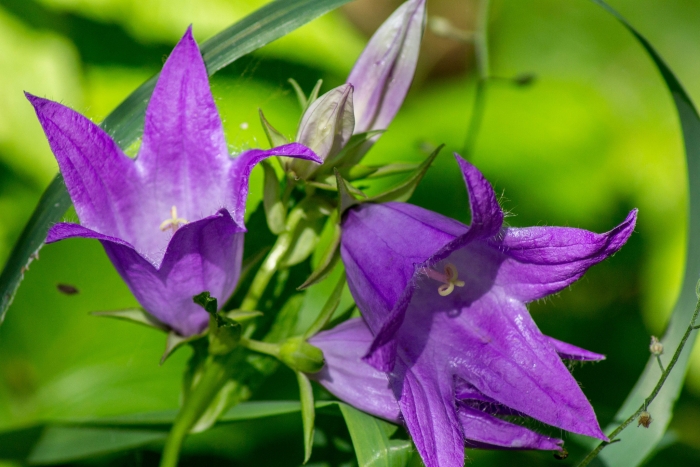Giant Bellflower
(Campanula latifolia)
Giant Bellflower (Campanula latifolia)
/
/

Ведамир Таганайский
CC BY 4.0
Image By:
Ведамир Таганайский
Recorded By:
Copyright:
CC BY 4.0
Copyright Notice:
Photo by: Ведамир Таганайский | License Type: CC BY 4.0 | License URL: http://creativecommons.org/licenses/by/4.0/ | Rights Holder: Ведамир Таганайский | Publisher: iNaturalist | Date Created: 2019-07-26T13:01:11-07:00 |

























Estimated Native Range
Summary
Campanula latifolia, commonly known as giant bellflower, is a clump-forming perennial herb native to a variety of habitats including broad-leaved woodlands, coppices, parklands, forest margins, and meadows across Europe and western Asia. It typically grows to a height of 24-47 inches (60-120 cm) and features erect, unbranched stems with broadly ovate basal leaves and ovate-lanceolate upper leaves. From July to September, the plant produces striking racemes of hermaphrodite, bell-shaped, violet-blue flowers that are highly attractive to pollinators. The flowers are showy and add a splash of color to the garden during their blooming period.
The giant bellflower is valued for its tall, stately presence and beautiful flowers, making it a popular choice for cottage gardens, woodland gardens, and naturalized areas. It is also used in border plantings and as a cut flower due to its long stems. This species prefers moist, well-drained soil and can tolerate a range of light conditions from partial to full shade. While it is generally easy to maintain, it can be susceptible to slug and snail damage. Additionally, it may require staking in exposed sites or rich soils to prevent the tall stems from flopping over. Campanula latifolia is not known for being invasive, but it can self-seed in favorable conditions, which is something gardeners should monitor.CC BY-SA 4.0
The giant bellflower is valued for its tall, stately presence and beautiful flowers, making it a popular choice for cottage gardens, woodland gardens, and naturalized areas. It is also used in border plantings and as a cut flower due to its long stems. This species prefers moist, well-drained soil and can tolerate a range of light conditions from partial to full shade. While it is generally easy to maintain, it can be susceptible to slug and snail damage. Additionally, it may require staking in exposed sites or rich soils to prevent the tall stems from flopping over. Campanula latifolia is not known for being invasive, but it can self-seed in favorable conditions, which is something gardeners should monitor.CC BY-SA 4.0
Plant Description
- Plant Type: Herb
- Height: 2-4 feet
- Width: 1.5-2 feet
- Growth Rate: Moderate
- Flower Color: Blue, Purple
- Flowering Season: Spring, Summer
- Leaf Retention: Deciduous
Growth Requirements
- Sun: Full Sun
- Water: Medium
- Drainage: Medium, Fast
Common Uses
Border Plant, Butterfly Garden, Deer Resistant, Low Maintenance
Natural Habitat
Broad-leaved woodlands, coppices, parklands, forest margins, and meadows
Other Names
Common Names: Broad-Leaved Bellflower, Large Campanula
Scientific Names: , Campanula latifolia, Campanula macrantha, Campanula macrantha, Campanula macrantha, Drymocodon latifolium, Trachelioides latifolia, Trachelodes latifolia,
GBIF Accepted Name: